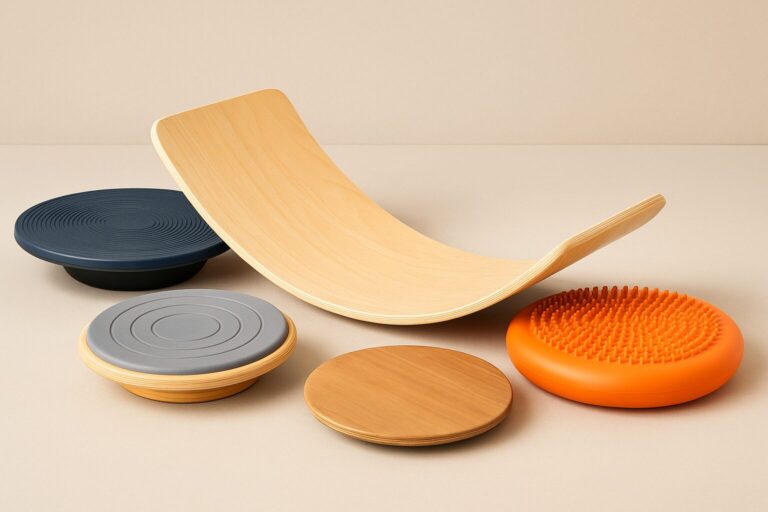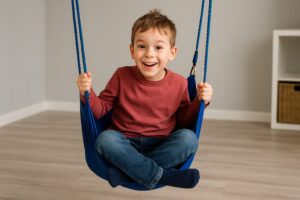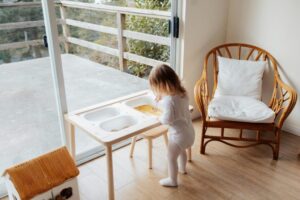Why Balance Boards Help
- Vestibular input that can calm or alert the nervous system
- Core strength & posture through gentle, controlled motion
- Focus support via short movement breaks during school or work
- Indoor-friendly option for movement when space is limited
Best Balance Boards for Kids
For kids, balance boards are equal parts play and therapy—great for sensory seekers and for children who benefit from short movement breaks to reset attention.
Top Picks for Kids
- Play-in-Joy Balance Board (Curved Wooden Board)
Why we like it: Classic Waldorf-style board that rocks, balances, and fuels imaginative play (bridge, slide, tunnel). Smooth, durable wood with a gentle arc kids love.
View on Amazon » - Yes4All Plastic Wobble Balance Board (Kids)
Why we like it: Lightweight and tough—ideal for classrooms or therapy rooms. The textured top helps with grip, and it’s easy to wipe clean.
View on Amazon » - Trideer Kids Wobble Cushion (Balance Disc)
Why we like it: A softer, lower-profile option for seated movement or beginner balance work. Great at a desk, on the floor, or for sensory circuits.
View on Amazon »
Balance Boards for Adults
Adults use balance boards to add subtle movement at a standing desk, reduce stress, and support rehab or fitness. Look for wider decks and higher weight limits for comfort and stability.
Top Picks for Adults
- FluidStance “The Plane” Standing Desk Balance Board
Why we like it: Office-friendly styling, quiet motion, and ergonomic design make it easy to use at a desk without wobbling too much or scuffing floors.
View on Amazon » - TheraBand Rocker Board (Physical Therapy)
Why we like it: PT-grade board with predictable fore–aft or side–side motion—great for rehab, balance training, and targeted vestibular input.
View on Amazon » - StrongTek Professional Wooden Balance Board
Why we like it: Solid build and grippy surface; supports higher weights and daily training. A reliable all-rounder for home or clinic use.
View on Amazon »
How to Use Balance Boards (Quick Start)
- Start low & slow: Begin with shoes on, short sessions, and a nearby support (wall or chair).
- Choose flooring wisely: Use on a rug or mat to prevent slipping and reduce noise.
- Build routines: Try 2–5 minute movement breaks between tasks or before seated work.
- Supervise kids: Especially when trying new motions or standing on curved boards.
Pair With Other Sensory Tools
Round out your vestibular setup with sensory swings, therapy balls, and sensory trampolines for a complete home or classroom circuit.
Frequently Asked Questions
Are balance boards safe for kids?
Yes—with supervision. Start with a mat or carpet, keep sessions short, and introduce new movements gradually.
Which balance board is best for adults?
For desk use, go with a standing-desk board (subtle motion). For training or rehab, try a rocker board or sturdy wooden wobble board.
Do balance boards help with focus?
Many people find short movement breaks improve regulation and attention—especially before tasks that require sustained focus.
What if I need a quieter option?
Use on a rug, or choose a balance disc (cushion) for softer, near-silent movement.


